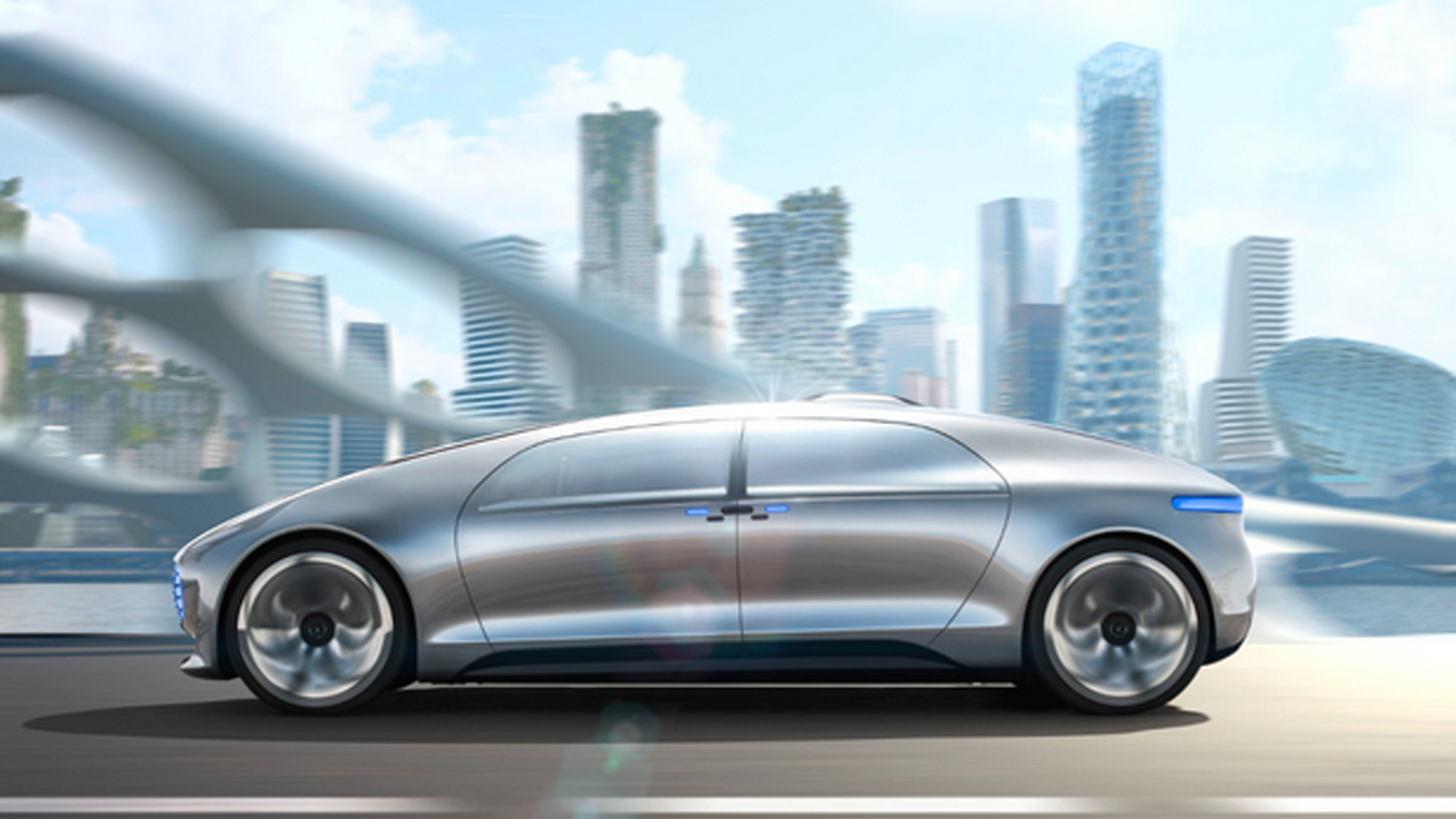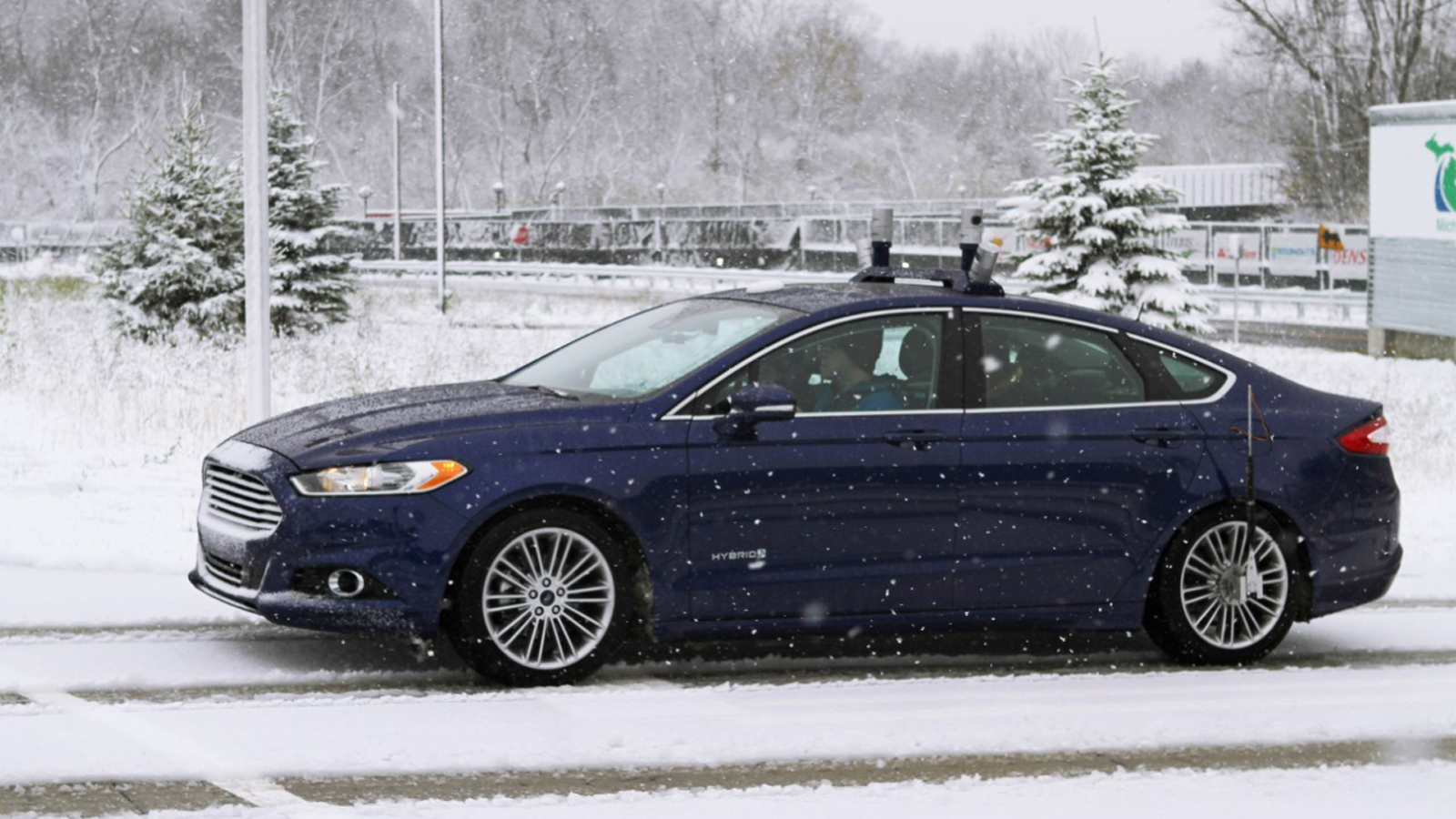Are we there yet? The reality of the driverless car revolution
It's not all fantastic, lazy driverless dreams - how close actually are we?

Self-driving cars have come a long way, quite literally: Google's self-driving cars have driven more than 1 million miles, and car manufactures are already making vehicles that can do amazing things without the driver's involvement.
The self-driving revolution is clearly coming, but like excited children we can't help asking the same question: are we there yet?
Where we're at
Google's cars are clocking up more than 10,000 autonomous miles per week, but only when it's nice: their sensors can't currently cope with bad weather.
With 70% of Americans living in areas prone to snow and many countries offering equally challenging weather conditions, that's not ideal. That's why Ford has a bunch of hybrid Focuses tooling around in the snow in Michigan.

Bad weather can block cars' LIDAR sensors (the spinning beacons on the top which pull in huge amounts of data with each revolution to 'see' the environment), while snow on the ground can confuse the navigation software.
As Monika Wagener, manager of Public Affairs & Communications in Ford's Research and Advanced Engineering division told techradar, "we managed to make driving autonomously in snow possible by doing high resolution 3D mapping.
"That means the vehicle knows the lane markings and other details even if they are covered in snow." Ford has also been working on improved LIDAR sensors for when the weather's better.
Sign up for breaking news, reviews, opinion, top tech deals, and more.
"The new LIDARs have a more suitable beam pattern as they have been designed for various driving conditions," Wagener explains. "They also have a longer range, which is now at 200 metres."
To date, autonomous vehicles have had a human ready to take over in the event of a problem. In the long term, however, the humans will be replaced by software - and that software will need to identify false positives (for example by ensuring your car doesn't panic-brake at 70mph if a sensor "sees" something that isn't there) and take action in the event of problems with any of the in-car systems.
And of course, it'll need to take action to avoid crashes. If you search YouTube for "Tesla autopilot", you'll see that the software still has some way to go before being considered anywhere near truly autonomous.
A new highway code
The United Nations Convention on Road Traffic was amended to allow self-driving vehicles in 2014, provided that the vehicle's system "can be overridden or switched off by the driver", and existing UK legislation already covers testing of driverless cars provided a human can intervene.

For normal driving, UK laws will be amended in 2017 with the EU following suit in 2018. US regulators are currently studying driverless cars and are expected to take the same approach as the UK, mandating a human driver who can take over if the automated systems fail.
There are other issues for regulators to consider. Partially automated vehicles require the human driver to have a normal licence, but should fully automated cars? How will MOT tests ensure that the automation systems are okay? Should tailgating still be an offence for the automotive automatons if driverless cars can use it to reduce their environmental impact?
Most importantly of all, there's the issue of liability. Who's legally responsible if an automated car injures or kills somebody?
That last issue explains why cars that seem perfectly capable of driving themselves currently don't. According to Steve Pendry of the Association of British Insurers (ABI): "the situation at present is clear: even with autonomous technology features on cars, liability rests with the driver."
As Penury explains: "in line with the development of increased automation within aviation, it is likely that the driver will continue to be held liable in the event of a crash if they are able to step in and intervene, overriding the technology by making control inputs themselves."
Where things get more difficult is when the driver isn't expected to take over. If a fully autonomous vehicle were to crash, "liability would rest with the vehicle manufacturer or system manufacturer." That sound you hear is lawyers rubbing their hands in anticipation.
There's another issue around driverless cars, and that's data. While insurers are quite pleased at the prospect of in-car telemetry systems that make insurance fraud difficult, if not impossible, there's also the issue of data protection to ensure that data isn't misused and details of our journeys don't fall into the wrong hands.
And inevitably, there's hacking and electronic crime to consider too. The UK government is currently consulting on whether regulations should be amended "to ensure both automated and connected vehicle technologies are protected from possible cyber threats."
Are we there yet?
Fully automated vehicles are closer to production than you might think. Mercedes' 2017 E-Class is the first production car - a real car, not a prototype - to be granted an autonomous driving licence in Nevada, and while Mercedes expects the driver to keep his or her hands on the wheel, the car can automatically follow other cars at up to 124mph and assist with the steering.

It will also have automatic emergency braking and steering and smartphone-controlled self-parking too.
According to the Institute of Mechanical Engineers, there are five levels of vehicle autonomy: driver control, assisted driving, partial autonomy, high autonomy and full autonomy.
We're currently between Assisted Driving and Partial Autonomy, where some systems are automated - adaptive cruise control, lane assist, self-parking - but the cars don't drive themselves. That's the next step, High Autonomy.
With High Autonomy the driver can still step in, but the car can automatically evade hazards, follow roads, anticipate what other road users are doing and make ethical decisions, such as whether it should sacrifice you instead of plowing into a bus full of orphans and puppies.
The IME predicts that automation will come in stages. By 2018 we should see manufacturers such as Volvo and Mercedes offering vehicles that can follow the road automatically - Mercedes already has prototypes that can automatically overtake slow-moving traffic - and Bosch aims to have a self-driving solution for motorway driving by 2020.
Google's autonomous car isn't expected before 2025, but the Institute of Electrical and Electronic Engineers (IEEE) predicts that by 2040, up to 75% of all vehicles will be autonomous.
"We see level 4-capable vehicles in 4 years time, but in well defined areas under favourable weather conditions," Ford's Wagener says.
"The first applications will be more likely within dedicated fleets and ride services, but it is too early to predict when they will become available on a larger scale and for private users."
What if I must buy a car now?
If you can't wait until 2025 for the expected Google Car for a new car purchase, the current available driver assists make your morning commute a lot more tolerable. Tesla has autopilot, Mercedes-Benz has Distronic Plus with steering assist and Volvo has Pilot Assist II, which provide semi-autonomy for highway cruising.
These options typically cost thousands (price varies by car), but aid with maintaining speed and steering. Take Mercedes-Benz' Distronic Plus with steering assist technology for example: the technology combines adaptive cruise control (ACC) and steering assist to let the car automatically speed up, slow down and even stop. Steering assist can even follow the lane markers and steer the car automatically.
All you have to really do is make sure your hand is on the wheel, without having to put much effort into steering. If the car comes to a stop for longer than about five seconds, you have to manually tap the resume button or tap the gas pedal to get the car going again.
However, if a luxury car is out of your budget, mainstream cars such as the Kia Optima and Honda Civic offer full-speed range ACC that can accelerate, slow down and stop the car for you.
If you want a compact car, the Hyundai Elantra offers ACC and steering assist capabilities, but the ACC is limited to speeds of 5 mph and faster. The lane keep assist system doesn't operate as well autonomously as the luxury marques, either.
In short - they're a long way from the true driverless car, more aids to make us a little safer behind the wheel. Self-driving vehicles are coming, but they'll start with trucks and taxis.
Your KITT-a-like sports car might take a bit longer to arrive...

Contributor
Writer, broadcaster, musician and kitchen gadget obsessive Carrie Marshall has been writing about tech since 1998, contributing sage advice and odd opinions to all kinds of magazines and websites as well as writing more than twenty books. Her latest, a love letter to music titled Small Town Joy, is on sale now. She is the singer in spectacularly obscure Glaswegian rock band Unquiet Mind.